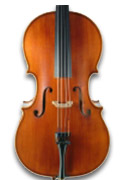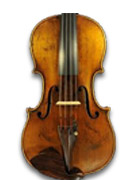Introduction
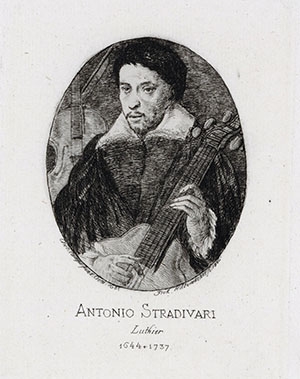
Antonio Stradivari, known as one of the greatest luthiers in history, crafted violins, violas, cellos, and other string instruments that have been celebrated
for their unparalleled sound and beauty for over three centuries.
Born in Cremona, Italy, during the Renaissance, Stradivari's life was dedicated to the pursuit of perfection in musical instrument making.
His work not only defined the standards of his time but also continues to influence the world of music and craftsmanship to this day.
This article explores in depth the life of Antonio Stradivari, his contributions to the art of luthiery,
the intricacies of his craft, and the legacy that has cemented his name in history.
Early Life and Education
Cremona: A Center of Musical Craftsmanship
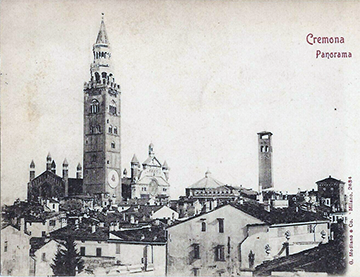
Cremona, a small but culturally rich city in the Lombardy region of northern Italy, played a pivotal role in the development of Western music.
The city was a melting pot of artistic talent during the Renaissance, fostering a deep appreciation for music and the arts.
The Amati family, with Andrea Amati as the patriarch, was already established in Cremona as pioneering violin makers by the time Antonio Stradivari was born.
This environment created fertile ground for the young Stradivari to grow into the master craftsman he would become.
Birth and Childhood
Antonio Stradivari was born around 1644, though the exact date remains uncertain due to the lack of definitive records.
His parents, Alessandro Stradivari and Anna Moroni, were not of notable wealth or status,
and there is little documentation about Stradivari's early years.
However, the vibrant cultural atmosphere of Cremona undoubtedly influenced his early interest in music and instrument making.
The origins of Stradivari's early education in luthiery are somewhat enigmatic.
It is generally accepted that Stradivari was apprenticed to Niccolò Amati, one of the most prominent violin makers of the time.
The apprenticeship system in Renaissance Italy was the primary way for young artisans to learn their craft.
As an apprentice, Stradivari would have been responsible for a wide range of tasks, from preparing wood and varnish to
assembling and finishing instruments under Amati's watchful eye.
This period of rigorous training laid the foundation for Stradivari's exceptional craftsmanship and his later innovations.
The Stradivari Workshop in Cremona
Establishing His Own Workshop

By the 1660s, Stradivari had completed his apprenticeship and was ready to establish his own workshop.
His early works, which date from around 1666, still bear the influence of his master, Niccolò Amati.
The violins Stradivari produced during this period closely followed Amati's designs,
characterized by a smaller body, a gentle arching of the top and back plates, and a warm, yet somewhat restrained tone.
Stradivari’s workshop, located on Piazza San Domenico (now Piazza Roma), became a hub of innovation and excellence in the art of luthiery.
Cremona was home to several other luthiers, creating a competitive environment that spurred Stradivari to push the boundaries of his craft.
He was meticulous in his approach, carefully selecting materials, refining designs, and perfecting construction techniques.
Over time, he began to deviate from Amati’s patterns, introducing modifications that would define his unique style and lead to the creation
of some of the most revered string instruments in history.
Workshop Expansion and Family Involvement.
As Stradivari’s reputation grew, so did the demand for his instruments.
To meet this demand, he expanded his workshop, taking on apprentices and assistants.
Among these were his two sons, Francesco and Omobono,who would later carry on the Stradivari tradition after their father's death.
The workshop was not only a place of work but also a center of learning, where Stradivari imparted
his knowledge and skills to the next generation of luthiers.
The family atmosphere in the workshop was essential to the production process.
Stradivari's sons were trained in every aspect of instrument making, from the selection of wood to the final varnishing.
This familial involvement ensured that the Stradivari name would continue to be associated with the highest standards of
craftsmanship long after Antonio's death.
Stradivari’s Innovations and Techniques
Antonio Stradivari is celebrated not just for the quantity of instruments he produced,
but for the significant innovations and improvements he introduced to the craft of violin making.
His career can be divided into three main periods, each marked by different stylistic developments and technological advancements.
The Amatese Period (1660-1690).

During the Amatese period, Stradivari’s work was strongly influenced by the teachings of Niccolò Amati.
The instruments from this time are characterized by their adherence to the Amati style—delicate,
with a smaller body and a slightly rounded, almost domed arching.
These instruments are often seen as transitional pieces in Stradivari's career,
showing his early mastery of the craft while still searching for his own voice.
The violins produced during this period were noted for their elegance and refined tone,
but they did not yet exhibit the power and projection
that would later define Stradivari’s golden period. These early works are now rare and highly prized by collectors,
not only for their beauty but also for their historical significance as the precursors to Stradivari's later masterpieces.
The Golden Period (1700-1720).
The golden period is widely regarded as the zenith of Stradivari’s craftsmanship.
During these two decades,Stradivari perfected his designs and created instruments that are considered the finest ever made.
Several factors contributed to the success of the golden period, including innovations in design, meticulous attention to detail,
and the use of superior materials.
Design Innovations
One of the most significant changes Stradivari introduced during this period was the enlargement of the violin’s body.
By increasing the length and width of the instrument, Stradivari was able to produce a richer, more powerful sound.
He also refined the arching of the top and back plates, creating a more pronounced curvature that enhanced the instrument's acoustic properties.
Varnish Techniques :
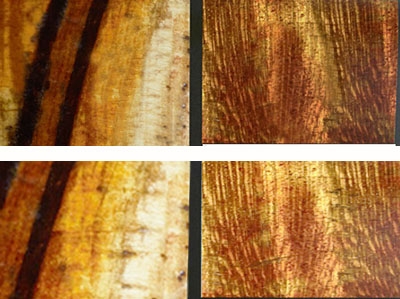
The varnish used on Stradivari’s instruments from this period is legendary for its appearance and its impact on the instrument's sound.
The golden-red hue of the varnish, coupled with its translucency, gave the instruments a warm, glowing appearance.
The exact composition of this varnish remains a closely guarded secret, and despite numerous scientific analyses,
its precise ingredients and application methods continue to elude modern luthiers.
Acoustic Properties :
Stradivari’s golden period violins are renowned for their exceptional acoustic properties.
They produce a sound that is both powerful and nuanced, capable of filling large concert halls while maintaining clarity and subtlety.
This balance of power and beauty has made Stradivari’s golden period violins the instrument of choice for many of the world’s greatest violinists.
The instruments from this period, such as the "Messiah" (1716), the "Lady Blunt" (1721), and the "Soil" (1714), are considered masterpieces.
These violins are not only beautiful objects but also supreme musical tools, capable of producing a wide range of tonal colors and dynamics.
The Late Period (1720-1737).
As Stradivari aged, his sons Francesco and Omobono became more involved in the workshop’s daily operations.
The late period of Stradivari’s career is marked by a slight decline in the consistency of his output, though the quality of his work remained high.
The instruments from this period often exhibit a slightly different style, with some showing signs of the master’s advancing age,
such as a less delicate touch in the varnish or minor asymmetries in the construction.
Despite these changes, many of Stradivari's late-period instruments are still highly regarded.
The "Kreisler" (1733) and the "Gibson" (1734) violins,
for example, continue to be played by leading violinists and are praised for their rich, mature tone.
The cellos from this period, such as the "Duport" (1711),
are particularly revered for their deep, resonant sound.
Craftsmanship and Materials :
Antonio Stradivari’s instruments are the result of an extraordinary combination of artistic vision, technical skill, and scientific understanding.
His meticulous approach to craftsmanship, from the selection of materials to the final assembly, set a standard that has never been surpassed.
Choice of Materials :
The quality of the wood Stradivari used is one of the key factors contributing to the exceptional sound of his instruments.
Stradivari primarily used spruce for the top plate, maple for the back, ribs, and neck, and ebony for the fingerboard and fittings.
These materials were chosen not only for their aesthetic qualities but also for their acoustic properties.
Spruce for the Top Plate :
Spruce, a softwood, was favored for the top plate (or soundboard) because of its lightness and flexibility.
The top plate vibrates in response to the strings being played, and its properties are crucial in determining the instrument's sound.
Stradivari carefully selected spruce with a straight, tight grain, which contributes to the clarity and projection of the sound.
Maple for the Back, Ribs, and Neck :
Maple, a hardwood, was used for the back, ribs, and neck of the instrument.
The density and stiffness of maple provide a solid foundation for the instrument, helping to produce a full, rich tone.
The back plate, in particular, plays a significant role in reflecting
sound waves back through the instrument, amplifying the sound produced by the top plate.
The Influence of the "Little Ice Age :
Recent research has suggested that the unique properties of the wood used by Stradivari may have been influenced by the so-called "Little Ice Age,"
a period of cooler temperatures that occurred between the 14th and 19th centuries.
The colder climate is believed to have slowed the growth of trees, resulting in wood with denser and more uniform grain.
This denser wood may have contributed to the superior sound quality of Stradivari’s instruments.
Construction Techniques :
Stradivari’s construction techniques were as innovative as they were precise.
Each part of the instrument was carefully crafted to maximize its acoustic potential.
Stradivari’s attention to detail extended to every aspect of
the instrument, from the thickness of the wood to the placement of the f-holes.
Graduation of the Plates :
One of Stradivari's key innovations was the precise graduation of the thickness of the top and back plates. Rather than making the plates of uniform thickness,
Stradivari varied the thickness to optimize the instrument's resonance.
The top plate is typically thinner in the center and thicker around the edges,
allowing it to vibrate more freely while maintaining structural integrity. This technique helps produce a powerful, balanced sound.
F-Holes :

The f-holes, the openings on the top plate of the violin, are crucial for sound projection.
Stradivari carefully positioned and shaped the f-holes to enhance the instrument's acoustic properties.
The placement of the f-holes affects the vibration of the top plate, while their shape influences the air resonance inside the body of the instrument.
Stradivari’s f-holes are slightly longer and more elegant than those of his predecessors, contributing to the distinctive sound of his instruments.
Basses Bar and Sound Post :
The bass bar and sound post are internal components that play a critical role in the instrument’s sound.
The bass bar, a wooden strip running along the inside of the top plate,
supports the lower strings and helps distribute the vibrations across the top plate.
The sound post, a small dowel positioned inside the instrument, connects the top plate to the back plate
and transfers vibrations between them.
Stradivari carefully adjusted the placement and dimensions of these components to optimize the instrument’s tone and response.
The Legacy of Stradivari’s Instruments.
Stradivari's instruments have become cultural icons, revered not only for their craftsmanship but also for their historical and artistic significance.
Over the centuries, Stradivari violins, violas, and cellos have passed through the hands of countless musicians,
collectors, and institutions, each contributing to the rich tapestry of their legacy.
Stradivarius Instruments in the Modern World.
The instruments made by Antonio Stradivari continue to be played by the world’s leading musicians.
They are prized for their exceptional sound quality and their ability to convey the deepest emotions in music.
A Stradivarius is more than just an instrument; it is a living connection to the past, a testament to the enduring power of art and craftsmanship.
Some of the most famous musicians of the modern era have played on Stradivarius instruments.
The celebrated violinist Itzhak Perlman plays the "Soil" Stradivarius, made in 1714, while the late
Yehudi Menuhin owned and performed on the "Lord Wilton" Stradivarius, made in 1742. The cellist Yo-Yo Ma
has performed extensively on the "Davidov" Stradivarius cello, made in 1712.
These instruments have been passed down through generations of musicians, each leaving their mark on the instrument’s history.
The connection between musician and instrument is deeply personal, and for those who play a Stradivarius,
it is both a privilege and a responsibility to bring the instrument’s voice to life.
Preservation and Conservation.
Given their historical importance and immense value, Stradivarius instruments are carefully preserved and maintained.
Many are housed in museums and collections, where they are meticulously cared for by expert luthiers. Institutions such as the
Smithsonian Institution, the Royal Academy of Music, and the Museo del Violino in Cremona hold significant collections of Stradivarius instruments.
These instruments are not merely static objects; they are living pieces of history that continue to be played and studied.
The preservation of Stradivarius instruments involves a delicate balance between maintaining their original condition and
allowing them to fulfill their intended purpose as musical instruments.
Regular maintenance, including adjustments to the sound post,
bridge, and strings, ensures that these instruments remain playable and continue to produce their characteristic sound.
Scientific Studies :

Modern science has also played a role in the preservation and understanding of Stradivarius instruments.
Techniques such as dendrochronology, which studies the tree rings in the wood, and CT scanning, which provides detailed images
of the instrument’s internal structure, have allowed researchers to learn more about Stradivari’s methods and materials.
These studies have deepened our understanding of why Stradivari’s instruments sound so extraordinary and have informed modern luthiery practices.
Stradivari’s Influence on Later Generations.
Antonio Stradivari’s influence on subsequent generations of luthiers cannot be overstated.
His instruments set a standard that
has inspired countless violin makers to strive for the same level of excellence.
The Stradivari model, with its distinctive shape, proportions, and acoustic properties, became the blueprint for modern violin making.
The Revival of Cremonese Violin Making.
The art of violin making in Cremona experienced a resurgence in the 19th and 20th centuries, driven in large part by the work of luthiers who sought to
emulate Stradivari’s achievements. Jean-Baptiste Vuillaume, a French luthier, was one of the most notable figures in this revival.
Vuillaume studied Stradivari’s instruments extensively, producing high-quality copies that are still highly regarded today.
His work helped to reestablish Cremona as a center of violin making and ensured that Stradivari’s legacy would endure.
In the 20th century, the revival of interest in Cremonese violin making continued, with luthiers in Italy
and around the world studying
Stradivari’s methods in an effort to replicate his success.
The establishment of violin making schools in Cremona,
such as the Scuola Internazionale di Liuteria, has helped to train new generations of luthiers in the traditions and techniques of Stradivari and his contemporaries.
The Search for the Stradivarius Secret.
The quest to uncover the "Stradivarius secret" has fascinated musicians, scientists, and luthiers for centuries.
Despite numerous attempts to replicate the sound of a Stradivarius, no one has been able to fully capture
the magic of these instruments. Theories abound as to why Stradivari’s instruments are so exceptional,
ranging from the quality of the wood to the composition of the varnish to the precise construction techniques he employed.
Acoustic Studies :
Advances in acoustic science have provided new insights into the characteristics of Stradivarius instruments.
Researchers have used laser scanning, computer modeling, and other technologies to analyze the vibrations of Stradivari’s violins,
comparing them to those of modern instruments.
These studies have revealed that Stradivari’s violins have a unique ability to0
produce a wide range of frequencies, contributing to their powerful, yet nuanced sound.
Material Analysis :
The materials used by Stradivari have also been the subject of extensive study.
Scientists have analyzed the wood, varnish, and glue used in Stradivari’s instruments in an effort to understand how
these materials contribute to the instrument’s sound. Some studies have suggested that the mineral content of the wood,
the composition of the varnish, and even the use of certain types of glue may play a role in creating the distinctive Stradivarius sound.
Cultural Impact and Symbolism
The name Stradivarius has transcended the world of violin making to become a symbol of perfection and excellence in a broader cultural context.
The instruments made by Antonio Stradivari are more than just musical tools;
they are cultural treasures that represent the pinnacle of human achievement in the arts.
Stradivarius in Literature and Art
The mystique surrounding Stradivarius instruments has made them a popular subject in literature, art, and popular culture.
Authors and artists have used the Stradivarius violin as a metaphor for beauty, rarity, and the pursuit of excellence.
In literature, a Stradivarius often symbolizes the unattainable ideal, the perfect object that one strives for but may never fully possess.
In art, Stradivarius violins have been depicted in paintings, sculptures, and other works, often as symbols of refinement and culture.
The iconic shape of the violin, with its graceful curves and elegant f-holes, has inspired countless artists and designers.
The Stradivarius as a Cultural Icon
In the modern world, the Stradivarius name is synonymous with the highest standards of craftsmanship and quality.
The term "Stradivarius" is often used metaphorically to describe anything that is considered the best of its kind.
For example, a luxury car might be referred to as the "Stradivarius of automobiles," or a fine wine might be called the
"Stradivarius of wines." This widespread use of the Stradivarius name reflects the enduring legacy of
Antonio Stradivari and the universal recognition of his work as the gold standard in his field.
Conclusion
Antonio Stradivari's life and work stand as a testament to the heights of human creativity, dedication, and craftsmanship.
From his early years in the culturally rich city of Cremona to his unparalleled achievements as a master luthier,
Stradivari's journey was one of relentless pursuit of perfection.
His instruments, created with an unmatched combination of skill, innovation, and artistry, continue to enchant and inspire musicians and listeners alike.
Stradivari's influence extends far beyond the world of violin making. His name has become a symbol of excellence, a benchmark
against which all others are measured.
The violins, violas, and cellos that emerged from his workshop are not only magnificent musical instruments but also
works of art that embody the spirit of their time and continue to resonate across the centuries.
As we look back on the life of Antonio Stradivari, we see a man who, through his extraordinary talent and vision, left an indelible mark on the world.
His legacy is one of timeless beauty and enduring influence, a legacy that will continue to inspire and captivate for generations to come.











